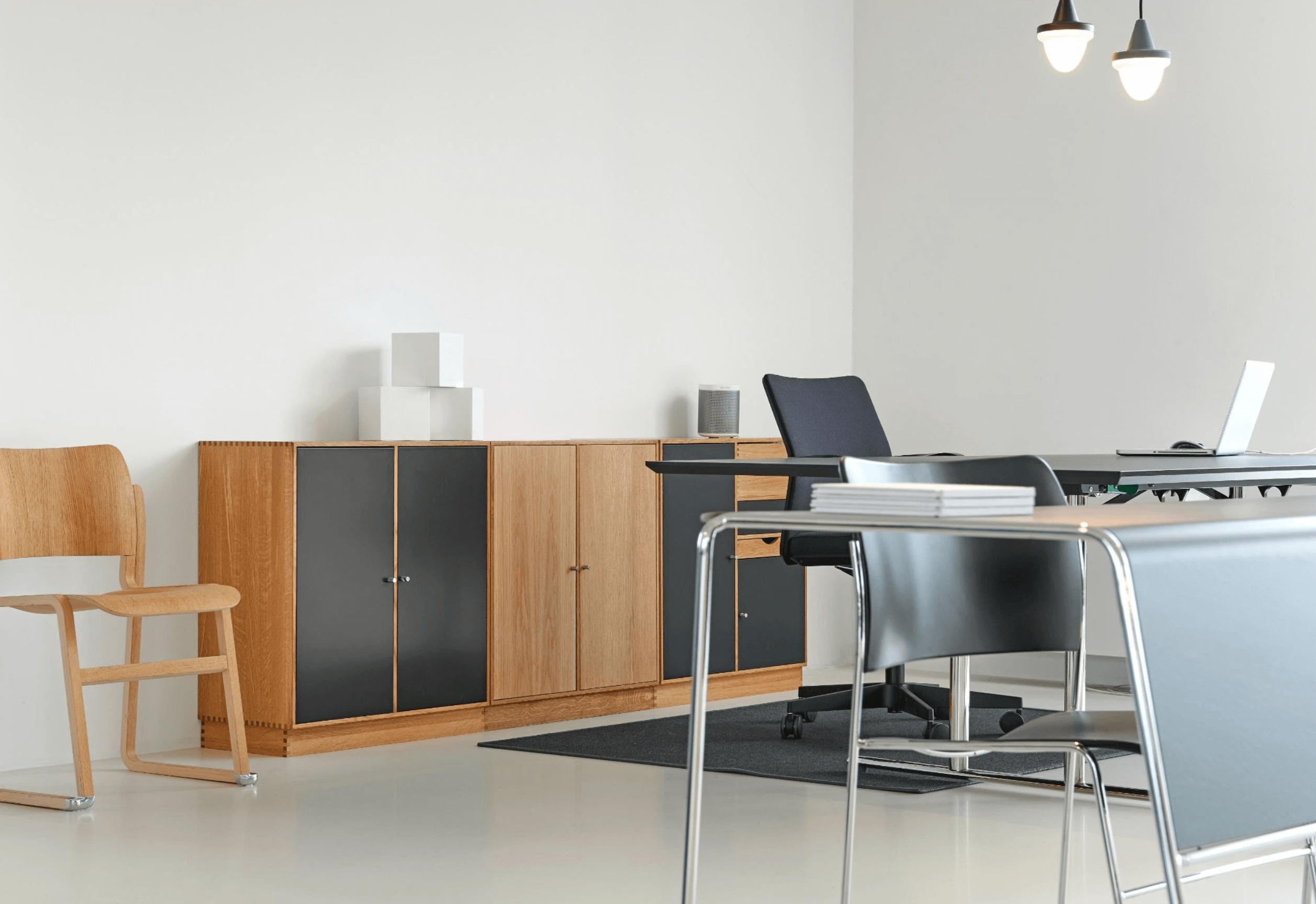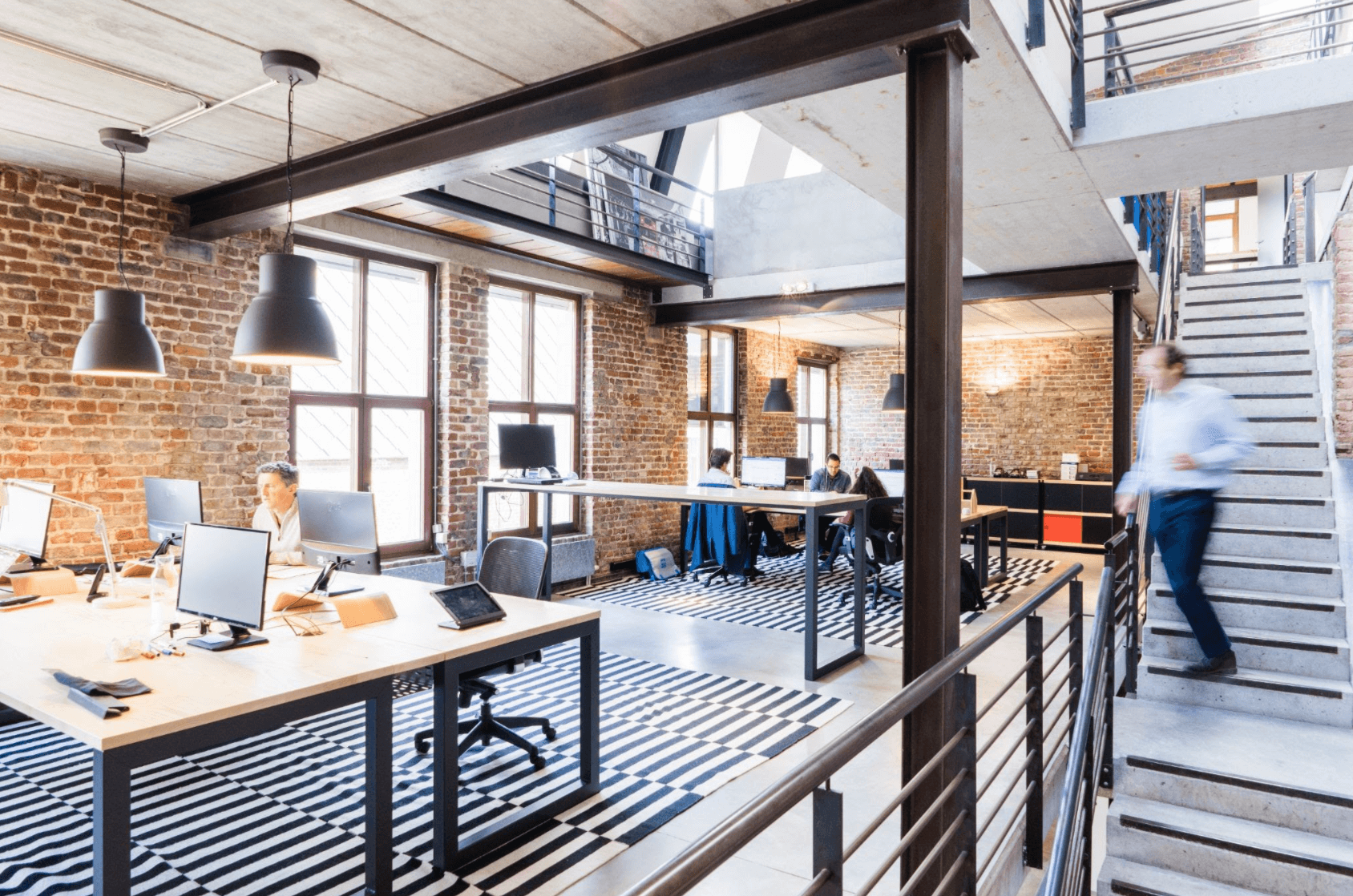The Best Office Lighting for Productivity & Employee Health

Lighting can make an enormous difference to employee wellbeing, health and productivity. Optimised office lighting, whether through a light update or a full commercial fit out, has been shown to bring about a reduction in sick days and increased work output making it a really worthwhile investment. Read on to find out how you can use office lighting to improve productivity and employee health.
Types of Office Lighting
A widely used type of office lighting is fluorescent light. This is the office lighting that most will be familiar with as many office spaces are expertly designed with fluorescent lighting systems as standard. As of September 2023, fluorescent lighting is actually due to be banned in the UK in favour of more efficient lighting.
Other types of lighting you may find in older office buildings are halogen bulbs. Halogen bulbs are not a good choice for offices due to their high energy consumption and are also being banned in the UK as of September 2021. If your office has halogen bulbs you will want to look into upgrading them as soon as possible.
With the more traditional and less energy-efficient lighting being gradually phased out many people are, or already have switched to LED (light emitting diode) bulbs. LEDs are cheaper, longer lasting, do not emit infrared radiation, do not trigger migraines and do not interfere with melatonin production and therefore sleep patterns. Even if lighting options are becoming more limited due to emission-reducing initiatives there are still plenty of options available when using lighting to boost your employees’ health and wellbeing.
How Can Lighting Colour Affect the Office Environment?
The colour, or temperature of the light can have an impact on the productivity of your space. By temperature this does not refer to the actual heat the bulb gives off but rather the colour cast the bulb emits. Many people will choose warmer-toned white light for their home. However, it is proven that cooler-toned blue/white lights increase productivity. Not only this, but cooler lights can be linked to improving mental acuity, reducing eye strain, and fatigue. Workers in offices with cooler lighting also report that they feel happier and more alert.
The “temperature” of a light is measured in kelvin with a lower number meaning a warmer more orangey white light, this tone of light can be found under 3,000 kelvin. 3,000 to 4,600 kelvin is a cool white. 4,600 and above reaches the blue end of the spectrum the higher up you go. This mimics daylight and works with the brain’s chemistry to reduce fatigue.
LED lighting is available as both warm and cool so for office space a temperature above 4,600K is best for increased productivity. Different colour lighting can be used in different parts of the office though, although cooler lights are great for productivity, warmer lights can be beneficial in breakout rooms as it gives a calmer and more inviting atmosphere. Meeting rooms suit a more middle temperature, where you want people to be calm, but also awake.

Does the Brightness of Office Lighting Affect Employee Wellbeing?
Sitting in a room constantly lit at the same level is very unnatural to humans and mimicking the lighting outside can increase wellbeing while reducing energy consumption. Though a brighter light is great in the morning for getting everyone awake and ready to work, a dimmer light towards the afternoon can help to maintain focus. A benefit of LEDs is that they can be adjusted to give just the right amount of lighting for the time of day for natural light rhythms.
Utilising Natural Light for Employee Productivity
A huge benefit of LED lighting is that it allows for the flexibility to mimic natural light. Natural light is the best type of light for wellbeing and productivity, though in some cases it is not reliable or attainable. There are studies that have shown that natural lighting is a top office perk for many people. Offices that are able to harness natural light report an 84% drop in reports of eye strain and headaches.
A way to increase natural light within an office is to increase the size or amount of windows or make your office more open plan. Even the paint can have an effect on office lighting, having a matte finish on the walls will make the room feel more.
If you would like to make the switch in your office to a more modern, cost-effective light source or find out how a hybrid system of LEDs and natural lighting can benefit you and your employees then get in contact with an office fit out specialist today.

